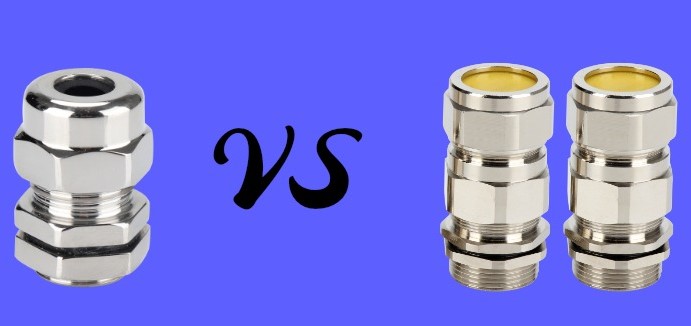What are Cable glands?
Cable glands are an essential component in modern electrical and mechanical systems, helping prevent damage to cables and ensure the equipment's safe and reliable operation. Cable glands provide a means of securely fixing cables to a device while also sealing the entry point and preventing moisture and other contaminants from entering.
There are two major Cable Glands Types: single compression cable glands and double compression cable glands. The two types differ in structure and sealing mechanism, offering unique advantages and disadvantages.
Types of Cable glands
Single Compression Cable Glands
Single compression cable glands, also known as cable connectors, consist of a single sealing element that compresses around the cable as it is tightened, creating a secure and watertight seal.
Single compression cable glands typically have a simpler design, allowing for a faster and more straightforward installation process. They are also more affordable and widely available, making them popular among many industries and applications.
However, single compression cable glands may not be as reliable or durable as their double compression counterparts. The seal created by a single compression gland may degrade over time, especially in harsh environments with high vibrations or extreme temperatures. This can result in leakage and potential damage to the equipment and cables.
Double Compression Cable Glands
Double compression cable glands, also known as cable fittings or cable anchors, feature two sealing elements that compress around the cable at different intervals, providing double the protection against moisture and other contaminants.
Double compression cable glands are considered more reliable and durable than single compression glands, especially in challenging environments such as offshore oil rigs or heavy machinery. They can withstand extreme temperatures and high pressure and are less likely to fail or require maintenance.
However, double compression cable glands are typically more expensive and may require more time and effort. They also require more space due to their larger size and complex design.
Conclusion:
In summary, there are two main types of cable glands: single compression cable glands and double compression cable glands. Single compression cable glands are affordable and easy to install but may not be as reliable in harsh environments. Double compression cable glands are more durable and reliable but can be more expensive and require more installation space and effort.
When selecting a cable gland for your application, it is important to consider the specific requirements of your system, including the environment, the size and type of cables, and the necessary level of protection and sealing. By understanding the advantages and disadvantages of each type of cable gland, you can make an informed decision that will help ensure your equipment's safe and efficient operation for years to come.





Comments